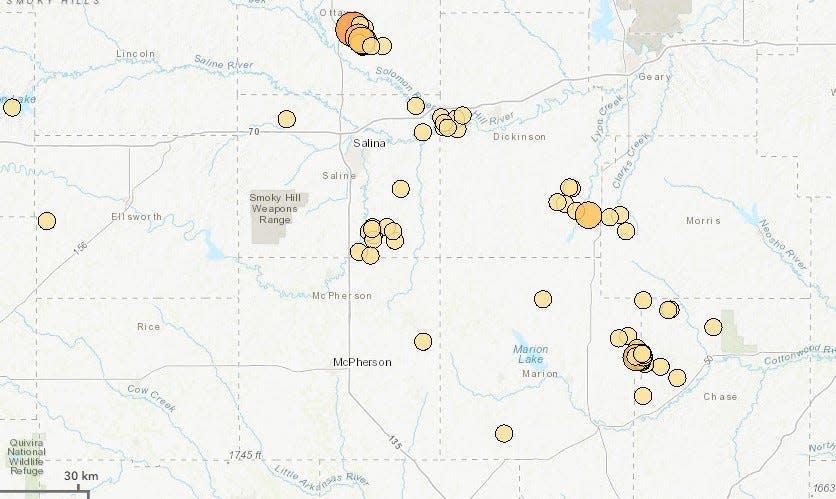Earthquakes, like the 4.1 magnitude earlier this month, are nothing new to central Kansas
A lot of people in north central Kansas took to social media Nov. 10, posting about feeling the ground beneath them shaking. For those who've lived here for a few years, this isn't something new.
At 6:18 p.m. a 4.1 magnitude earthquake was recorded by the Kansas Geological Survey (KGS) just north of Bennington in Ottawa County, the strongest recorded quake in Kansas in 2023.
The Did You Feel It? page for this quake's report on the United States Geological Survey's (USGS) website shows people across the state, and even in the surrounding states of Nebraska and Missouri reporting they had felt this particular quake.

Where are most earthquakes felt in Kansas?
According to the KGS, based out of the University of Kansas, 209 total earthquakes of a 2.0 magnitude or greater have been registered so far in 2023 at the 30 earthquake stations it monitors across the state.
While this seems like a lot of seismic activity, earthquakes aren't usually felt until they reach 2.5 or more magnitude, according to a scale produced by Michigan Technological University's college of engineering.
Looking at that 2.5 magnitude threshold, the number of earthquakes felt across the state in 2023 was only 56.
What's interesting about these 56 earthquakes though is where most originate. The vast majority of them have epicenters in what most people would consider central Kansas, including four of the 10 most powerful happening in Ottawa County alone.
In 2021, a series of earthquakes which Rick Miller of the KGS described as the "Saline County sequence," consisted of 138 events that were 2.0 magnitude or higher in Saline County.
What geological structures lie in central Kansas?
Central Kansas may appear flat on the surface, but underneath that surface are vast geological structures including the Nemaha Ridge or Uplift, which extends across the state diagonally.
In describing seismic activity, KGS's website said that this uplift, and the adjacent Humboldt Fault Zone to its east, coincided with the epicenter of the largest documented earthquake in the state, estimated to be 5.0 to 5.5 magnitude, that struck near Wamego and Manhattan in 1867.
This article originally appeared on Salina Journal: Kansas getting used to experiencing earthquakes in recent years

